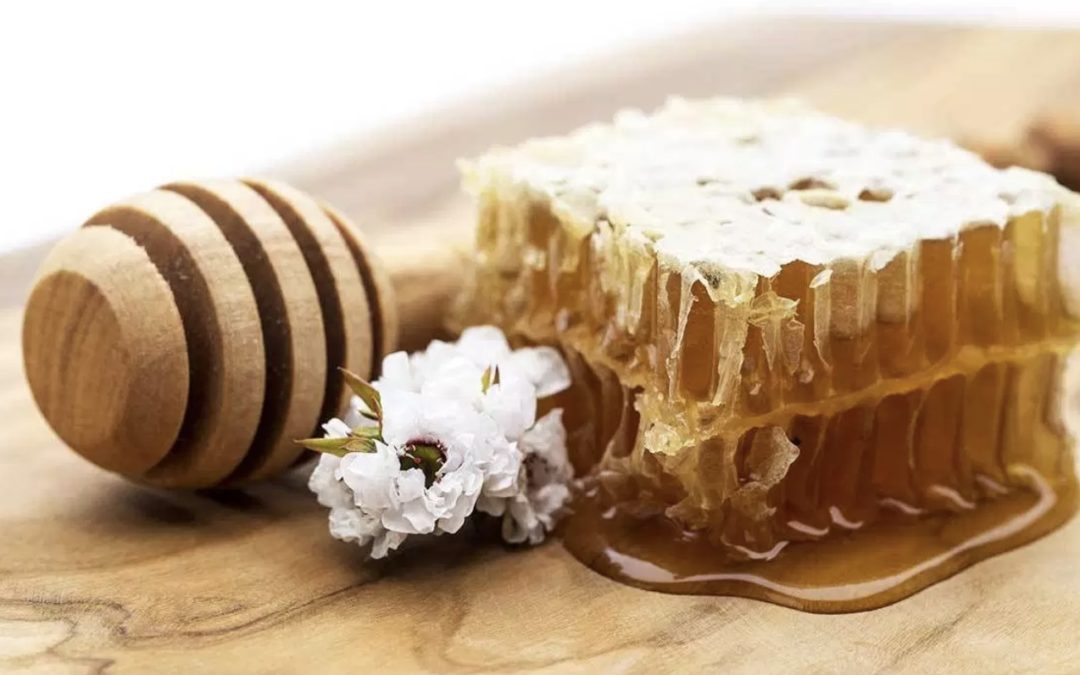General Manuka Honey Information:
• Active Manuka Honey Association (AMHA)
• Manuka Honey Research
……………..
Honey Sources:
• 5 Best Manuka Honey Brands
• Manuka Honey USA
• Comvita Manuka Honey
• Kiva Raw Manuka Honey
• Manuka Honey via Amish Honey
• Amish Honey
• Heavenly Organics
……………..
10 Surprising Benefits of Manuka Honey
Manuka Honey Health Benefits
1. Supports Digestive Health (Helps with SIBO, Low Stomach Acid and Acid Reflux)
2. Promotes Skin Health
3. May Help Treat Infections
4. Can Help Treat Burns, Wounds and Ulcers
5. May Prevent Tooth Decay and Gingivitis
6. May Aids IBS and IBD Treatment
7. Can Help Reduce Sore Throats
8. Can Help Reduce Seasonal Allergies
9. Beauty Treatment and Health Booster
10. May Improve Sleep
11. May Reduce Symptoms of Cystic Fibrosis
Read the complete article here.
……………
News Reports & Articles:
Honey Better Treatment For Coughs And Colds Than Antibiotics, Study Claims (The Guardian, 08/18/20)
Honey as a Wound Treatment? Scientists Are Exploring Its Potential Healing Effects (Discover Magazine, 06/18/20)
Manuka Honey May Be Antibiotic Powerhouse (CNN, 11/25/17)
Manuka Honey As A Medicine (pdf)
By P. C. Molan, Honey Research Unit, University of Waikato, Hamilton, New Zealand
Why Educational Information About Manuka Honey Is Hard To Find (10/02/12)
14 Healing Remedies With Honey (08/13/2009)
More On Manuka Honey (Includes Product Sources) (12/28/2007)
Knocking Out Superbugs With Honey (12/28/2007)
Honey May Relieve Children’s Cough (12/4/2007)
Honey To The Rescue (3/17/2007)
Honey Could Save Limbs (10/12/2006)
Honey A Better Healer Than Standard Antibiotics (7/30/2006)
The Amazing Healing Properties Of Honey (8/2/2000)
……………
How To Treat A Burn Using Honey
WikiHow.com
Besides certain snake bites, debilitating diseases, and/or being run over by a steam-roller, the most disfiguring injuries are made by burns. The following method has been tried and tested for hundreds of years, with excellent results in all cases.
Immediately After Receiving The Burn
1- Cool the burned area down as rapidly as is possible, to stop the flesh from cooking any further. Use cold, running water and cool it to a comfortable level; do not apply ice and freeze it.
2 – Pour enough clean honey over the burned area to overlap the wound and cover completely with thin, flexible, plastic wrap. Do not skimp on the honey – you can never use too much (except to the extent that it drips all over the place, making everything sticky and attracting insects). A thin plastic bag or sandwich bag can be slit along the edges or corner and used for the purpose of spreading the honey.
3 – Wrap the affected area with plastic wrap, such as cling wrap, being careful to keep a layer of honey between the burn and the plastic. Secure the plastic wrapping with gauze or crepe bandage and leave it alone for two days.
During The Aftermath
1 – After 48 hours, open it up and check for infection. There will usually not be any, as the burned flesh has been sterilised initially by the heat of the burn(unless it was cooled with dirty water, there is little chance of there being any noxious organisms present). However, don’t panic if infection is present: Have the victim eat a tablespoon of honey (preferably unfiltered and/or raw honey, containing propolis [a highly antibacterial product found naturally in raw honey], pollen, wax etc. The honey can be disguised in a sandwich) three times a day. It is imperative that the wound is not washed at all throughout this whole process. The honey must not be washed off; simply add more each time the dressing is opened. The rationale behind not washing the injury is that the honey forms a protective barrier over the area, and removing it will permit exposure to the vulnerable tissue.
2 – Charred or loose flesh may be removed with sterilised tweezers, but do not force it if it adheres to the wound: it will disengage in time. Pour more honey over the wound and cover, as before, with plastic wrapping and gauze or crepe, once again leaving it for two days. Repeat the foregoing process every two days.
3 – Continue to do this until the wound begins to granulate (about a week to ten days), then leave the dressing off for an hour, after which, pour more honey onto it and cover it up again. Again, do not be tempted to wash it!
4 – Now, every day, remove the dressing and leave the wound open for an hour longer each day. After seventeen to twenty days, the wound should have repaired enough to cover it with only a light dressing. At this stage it may be washed with warm water only – do not use soap or anything else – and the old honey removed. After a month, it should no longer require dressing and normal ablution procedures can be commenced.
5 – If infection occurs and the ingestion of honey does not appear to help, give the victim three bananas to eat every day, or give him a course of potassium tablets for a fortnight, in addition to the three tablespoons of honey. The honey and banana can be incorporated into a sandwich.
6 – The wound should heal up with minimal scarring, if any is evident at all, after a month or two.
………….























